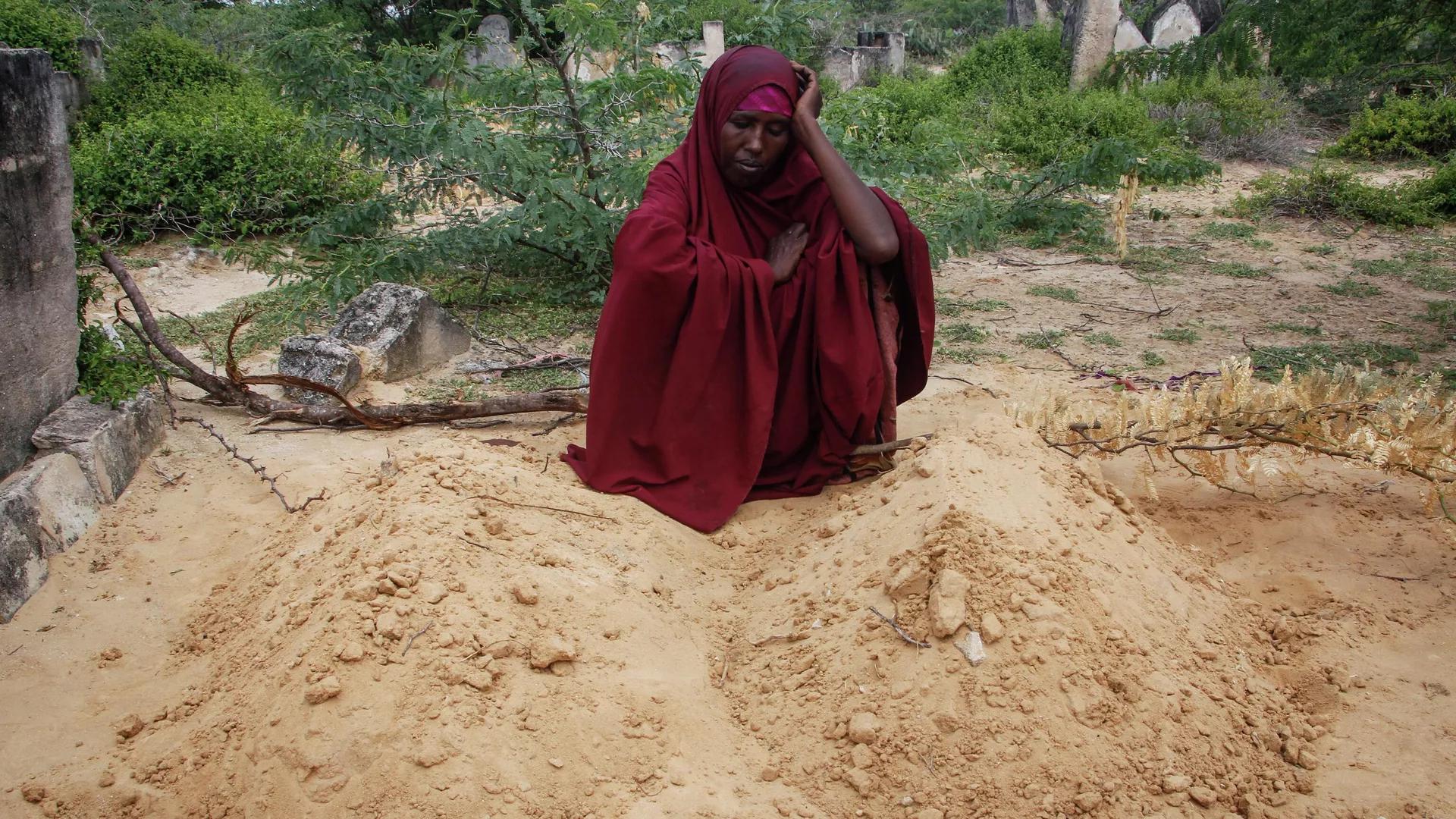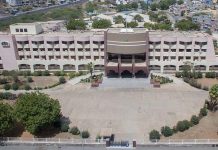Africa-Press – Cape verde. The longest and most severe drought in decades as well an ongoing conflict has forced 80,000 Somalis to flee to Kenya’s Dadaab refugee camps, with the majority of them arriving over the past two years.
“The reasons for this vary however, displacements often become inevitable when there is a multiplicity of risks (migration drivers). Although conflict is definitely a factor, droughts, and floods (increasing in both intensity and frequency due to climate change), have since become a considerable cause of displacement situations,” Dr. Sikanyiso Masuku, research fellow at the Institute for Democracy, Citizenship and Public Policy in Africa and the Center for Social Science Research at the University of Cape Town, South Africa, told Sputnik.
Meanwhile, the Greater Horn of Africa has been hit by the worst drought in more than four decades and one of the worst hunger crises of the last 70 years, with over 37 million people facing acute hunger, according to the World Health Organization (WHO). The March to May 2022 rainy season was the driest on record in the last seven decades, with international experts expecting a fifth consecutive failed rainy season between October and December 2022. People are left without food, livestock is dying, and this leads to famine.
“In Sudan, the country has been suffering from perennially severe droughts and famine since 1886 and yet the most recent drought incident affected over 6.1 million Sudanese with the Greater Upper Nile hosting around 60% of all IDPs in the country,” Masuku remarked to illustrate his point.
In the particular case of Somalia, environmental factors have become notoriously responsible for displacements, according to the academic. He emphasized that in the southern regions of Somalia, 249,000 displacements occurred in 2018 as a result of a perennial drought, while another 289,000 were displaced by floods.
Somalia is also one of the most severely affected due to the nearly three decades of military conflict in the country. Islamist terrorist group al-Shabaab*, meaning “The Youth,” has long been terrorizing ordinary Somalis, while simultaneously expanding its presence in Ethiopia, Djibouti, and Kenya. Despite the efforts by federal authorities and the African Union peacekeeping force (AMISOM), locals have remained largely unprotected in the face of the terror.
To complicate matters further, Somalia remains scarcely united, which adds to the federal government’s inability to thwart terrorist activity and to distribute humanitarian aid to people. As a result, people are forced to seek shelter in neighboring countries.
Refugee Camp Controversy There are basically two systems that exist to accommodate refugees, according to Masuku: some countries have a refugee camp system and self-settlement systems, i.e., where refugees share local housing amenities with locals or set up temporary accommodation.
On the other hand, refugee camps – and Kenya’s Dadaab camps are a glaring example – are specifically built for displaced people and administered by the United Nations High Commission for Refugees (UNHCR) and/or host governments. Refugees are meant to be provided with food, water, and other basic services such as schooling and health-care there.
However, the reality is a little bit different, according to Mark Okello Oyat, a Ugandan refugee residing in Dadaab, Kenya, who is also the director of community-based research organization, the Dadaab Response Association.
At the same time, the standard of education, which is managed by agencies like UNHCR, has fallen, according to the Ugandan refugee. He noted that every year, students are scoring very low marks because they lack materials, qualified teachers, the proper funding, and other things, placing refugees at further disadvantage.
Furthermore, in Kenya in particular, refugees cannot get Kenyan IDs or seek employment, so they cannot find a decent job or integrate into the society, according to Oyat. That would have been a less pressing issue if refugees residing in those camps had a clear understanding of when they could get back home. The problem is that in reality, they have been living there for decades: “There are many refugees who are born in the camp, also get married in the camps and also produce children,” said the Dadaab Response Association director.
The government of Kenya is trying to implement the New Refugee Act of 2021 to ease the life of camp residents. Without employment and clear life prospects, refugees can’t become self-sufficient and feel abandoned by the regional and international communities, according to the Ugandan national. Mental health and psychological problems are also acute, he continued, referring to African herders who lost their livestock, in particular.
“Animals have died, and we are experiencing many of the people having mental health problems,” he said. “A lot of them have committed suicide due to losing all that wealth and property, their trust in their animals, they have now ended up with a couple of nothing (…) Some men have chosen to even [leave] their wives and children and remain now in solitude, lamenting and mourning the loss of their wealth and animals, what used to depend on their pride, their happiness have completely gotten lost.”
Oyat suggested that in order to support and save these people, the regional governments should have considered a policy allowing them “to have access to other pastoral grounds within the region and maybe providing enough water points or water sources by drilling boreholes or building dams that can be used by those animals during the time when there is drought.”
Cholera Outbreaks To complicate matters further, the Dadaab camps have grown overcrowded with poor sanitation, lack of proper hygiene, and lack of water, causing severe infections and epidemics, according to the Ugandan national.
Over 350 cases of cholera have been identified in the Dadaab camp since the end of October, according to the UNHCR. Many of those affected by the dangerous disease are children. He revealed that the treatment centers in the camp at the moment are congested.
“If you go to any of the hospitals, you will find that there was all that time there for children because mostly kids, children who are badly affected are fully crowded, fully congested. There is no space for new children to be put in the wards. And that’s already a very big problem.”
In addition to that, the health centers also lack medicines, qualified staff, and minimal sanitary conditions. As a result, the number of infected is growing, according to Oyat.
Masuku specified that this is not the first time a cholera outbreak has occurred at Dadaab: in 2015, there was another outbreak, the most serious in the camps’ history.
“Factors contributing to this outbreak in 2015 were said to include a lack of latrines (which resulted in open defecation), below standard chlorine levels in the water, insufficient handwashing facilities and other social practices such as eating from the same plate (which did not help curtail transmission). Now, seven years later, this recent outbreak shows that little has changed at Dadaab,” he summarized.
What’s the Solution? “The fact that we have refugee camps such as Dadaab that are over 30 years old not only speaks to a failure in ending new cases of forced migration drivers, but also a failure to contain the old factors contributing to the same displacements,” emphasized Masuku. So, to solve this dilemma, a comprehensive approach is needed, according to the academic.
He also mentioned so-called “donor fatigue,” citing the fact that international donations for the UNHCR’s programs have been waning over the past several years. For instance, in the year 2015, only 42% of the 33 UN financial contribution appeals were met, and an even higher shortfall of 60% was witnessed in the annual voluntary contributions to the UNHCR’s budget, according to Masuku.
“There is therefore not only a need to focus on bringing cohesion around ending protracted situations of displacement but also consented efforts to address the main causes of such situations,” he said, emphasizing that funding, spending management, and extensive media coverage of the ongoing urgent problems hurting African communities are a must.
*Al-Shabaab is a terrorist organization banned in many countries.
For More News And Analysis About Cape verde Follow Africa-Press






